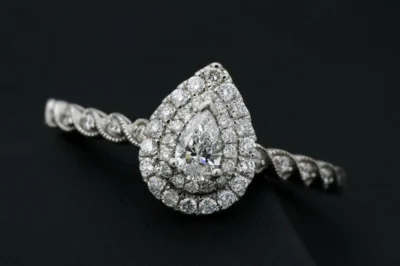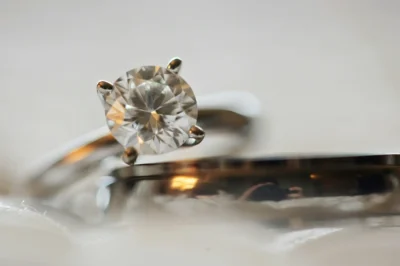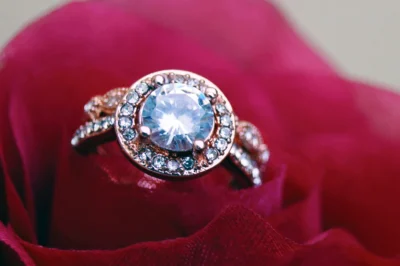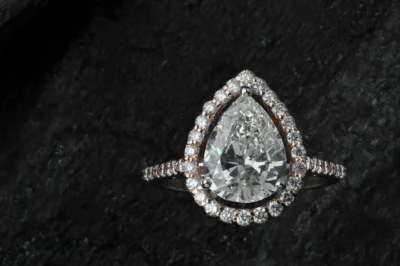When most people think about diamonds, they picture a sparkling, icy-white gem. It feels natural to assume that the “whiter” a diamond is, the better its quality. Jewelers often highlight D-color diamonds—the rarest, purest whites—as the gold standard. But here’s the truth: when it comes to diamond color, whiter isn’t always better.
In fact, diamond beauty is a delicate balance of cut, color, clarity, and carat. Depending on the setting, lighting, and size of the stone, a diamond with a little warmth can look just as breathtaking as a perfectly colorless one. For buyers who want maximum sparkle and smart value, chasing the whitest diamond isn’t always the smartest move.
This guide will walk you through the diamond color scale, explain how color interacts with other factors, and bust the myth that only colorless stones are worth buying. By the end, you’ll know how to shop smarter, save money, and choose a diamond color that fits both your style and your budget.
What Does “Whiter” Mean in Diamond Color?
Understanding the GIA Diamond Color Grading Scale
When jewelers say “whiter,” they’re referring to where a stone falls on the GIA diamond color scale—the most trusted system in the world. The scale runs from D to Z:
- D–F: Colorless – These are the “icy” whites, extremely rare and highly priced.
- G–J: Near Colorless – Slight traces of color that are nearly invisible to the naked eye.
- K–M: Faint Color – Noticeable warmth (often yellow or brownish), especially in larger stones.
- N–Z: Noticeable Color – Obvious tint, rarely used in fine jewelry unless for specific vintage styles.
The higher up you go (closer to D), the “whiter” the diamond appears.
Why Consumers Associate Whiteness with Quality
For decades, jewelry marketing has promoted the idea that the whitest diamond color is the best. It’s a simple story: the rarer the diamond, the higher its value. But rarity and beauty don’t always go hand in hand.
The human eye struggles to tell the difference between adjacent color grades—especially once a diamond is set. That means a G-color diamond, which costs significantly less than a D, can look virtually identical in real life.
Diamond Color in Context: The Bigger Picture
Diamond color isn’t a standalone factor. To truly understand its impact, you need to see how it interacts with the other 3Cs—cut, clarity, and carat.
Diamond Color vs. Cut Quality
Cut is king when it comes to diamond beauty. A diamond with an excellent cut reflects light so well that it masks tiny hints of body color. On the flip side, a poorly cut D-color diamond can look lifeless despite its perfect whiteness.
Think of cut as the spotlight that makes or breaks the show. If the diamond doesn’t sparkle, no amount of whiteness can save it.
Diamond Color vs. Clarity
Clarity measures inclusions (tiny internal flaws). When faced with a choice, many buyers wonder: “Should I spend more for a higher color grade or better clarity?” Often, the clarity upgrade makes more visible difference than moving from, say, an F to an E.
Diamond Color vs. Carat Weight
As diamonds get bigger, their color becomes easier to detect. A 1-carat H diamond may look white, while a 3-carat H diamond might reveal a faint warmth. That’s why larger stones often require buyers to go a bit higher on the color scale.
How Diamond Color Looks in Different Settings
A fascinating part of diamond color is how much the metal setting influences perception.
White Metals (Platinum & White Gold)
These metals reflect and emphasize the stone’s natural color. Any tint in the diamond is more noticeable, which is why buyers often choose G or higher in these settings.
Yellow Gold Settings
Yellow gold blends beautifully with lower diamond colors. A K-color diamond can appear much whiter when set in yellow gold because the warm tones complement each other.
Rose Gold Settings
Rose gold has a romantic pink hue that pairs perfectly with warmer diamonds. Many buyers intentionally choose lower colors here for a vintage look.
Halo Settings with Melee Diamonds
If your center stone is an H but your halo uses F-color melee, the contrast might reveal the center’s warmth. Matching side stones to the main diamond color is crucial for consistency.
Is Whiter Always Better? Breaking the Myth
Whiter Diamonds and Rarity
It’s true: D-color diamonds are extremely rare, which is why they command top prices. For buyers who care about exclusivity, rarity adds emotional value. But rarity doesn’t necessarily mean more beautiful.
Does the Eye Notice the Difference?
This is where the myth unravels. When viewed loose and upside down under lab conditions, yes, you can spot the difference between a D and an H. But once set and sparkling, most people—including jewelers—struggle to tell them apart.
Balancing Diamond Color with Cut
Here’s the golden rule: a well-cut G will look better than a poorly cut D. Cut maximizes brilliance, masking color. That’s why cut is often considered more important than diamond color.
When a Whiter Diamond Might Be Worth It
There are situations where paying for higher diamond color makes sense:
- Large Diamonds in White Metal: For 3-carat or larger diamonds set in platinum, higher color grades prevent visible warmth.
- Collectors and Investors: D–F diamonds have prestige and strong resale appeal.
- Status Purchases: For some buyers, owning the rarest grade carries emotional value.
When Lower Diamond Colors Are the Smarter Choice
For most shoppers, diamonds below D–F are the sweet spot.
Near-Colorless Diamonds (G–J)
The near-colorless range offers incredible value. These stones look white to the naked eye yet cost significantly less. Many jewelers consider G–H diamonds the “sweet spot” for balancing beauty and budget.
Warm Diamonds with Vintage Appeal (K–M)
Lower colors shine in vintage or antique-inspired designs. Their soft warmth pairs perfectly with yellow or rose gold, creating a romantic, timeless look. For some, the charm of a faintly colored stone feels more personal and unique than icy perfection.
Colored Diamonds: Proof That Color Can Be Beautiful
Here’s the irony: while shoppers chase the whitest diamond color, fancy colored diamonds like yellow, pink, and blue are among the rarest and most expensive gems on earth. The Hope Diamond, one of the most famous stones in history, is deep blue.
This proves a simple truth: color isn’t the enemy—it’s part of what makes diamonds diverse and beautiful.
Expert Tips for Choosing the Right Diamond Color
1. Consider the Setting Metal
- Platinum/white gold: stick with G or higher.
- Yellow/rose gold: you can comfortably drop to J or even K.
2. Factor in Diamond Size
Larger stones show more body color. If you’re buying 2+ carats, aim for higher colors.
3. Always Prioritize Cut
Cut brings sparkle. A brilliant G can outshine a dull D.
4. Certification Matters
Stick to diamonds certified by GIA or IGI. These labs ensure accurate color grading so you’re not paying for something you didn’t get.
Real-World Scenarios: Smart Choices in Diamond Color
Scenario 1: The Budget-Conscious Buyer
You want the largest diamond possible without sacrificing beauty. A 1.5-carat H diamond with excellent cut will sparkle just as brilliantly as a smaller 1-carat D diamond—but at the same price point.
Scenario 2: The Vintage Lover
You love yellow gold and antique styles. A K-color diamond with warm undertones set in a Victorian-inspired band gives you a unique, romantic look at a lower cost.
Scenario 3: The Prestige Seeker
You want the best of the best, regardless of price. A D-color diamond in platinum fits your desire for rarity and status.
Diamond Color FAQs
Q: Is D color really worth it?
Only if rarity and prestige matter to you. Visually, most people can’t tell it apart from G or H.
Q: What diamond color is best for engagement rings?
For platinum, aim for G or higher. For yellow or rose gold, you can comfortably go down to J or K.
Q: Can a lower-color diamond still sparkle?
Absolutely. Cut is the main factor in sparkle, not color.
Q: Why are colored diamonds so expensive if color is “bad”?
Fancy colored diamonds (pink, blue, yellow) are extremely rare, making them more valuable than even D-color stones.
Conclusion
So, is whiter always better for diamond color? The short answer: no.
While D–F diamonds are rare and prestigious, they aren’t always the smartest buy for beauty or value. The sparkle of a diamond depends more on cut than color, and many buyers find that G–J near-colorless diamonds strike the perfect balance of price and appearance. Warm diamonds, too, have their own charm and look stunning in vintage or gold settings.
At the end of the day, the “best” diamond color isn’t about chasing icy perfection—it’s about finding the stone that looks beautiful to your eyes, fits your budget, and makes your heart skip a beat.






